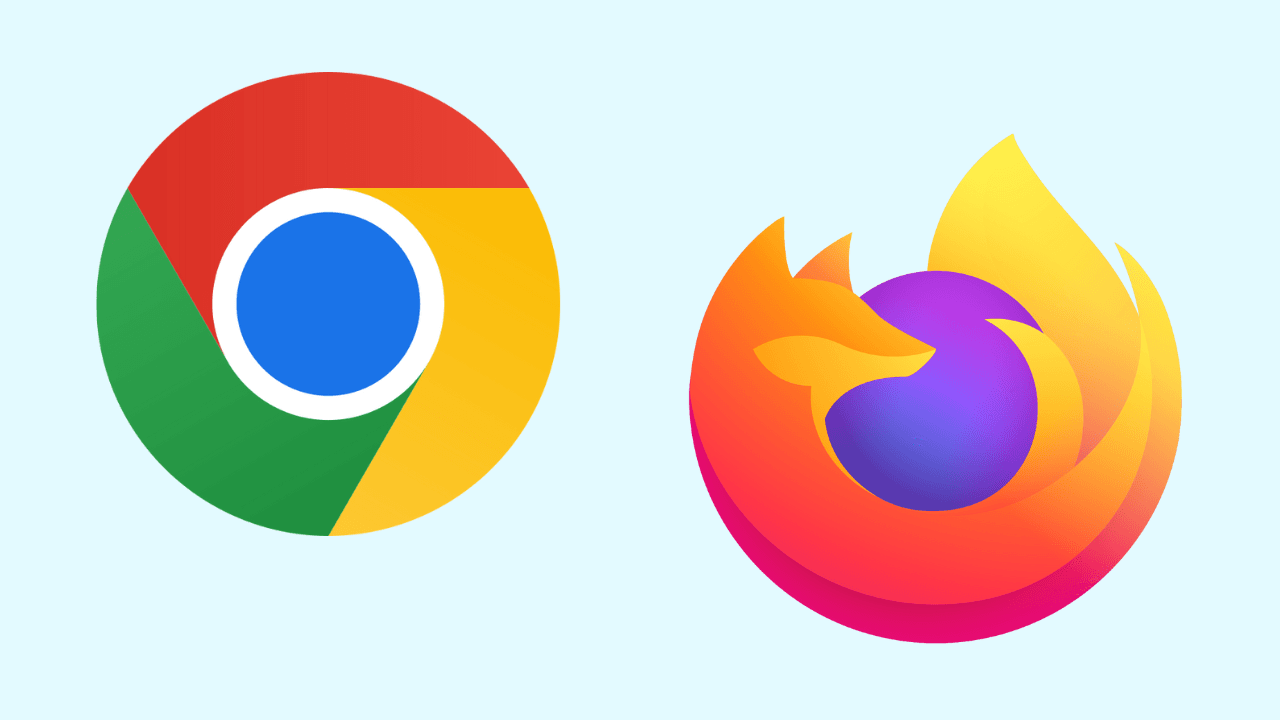
Every choice we make online has the power to shape the world offline—including the browser we use. In a digital landscape filled with options, today’s browsers offer more than just internet access—they reflect our values. Some prioritize speed. Others focus on privacy. And a few, like Wave Browser, go further—turning everyday browsing into a force for good.
As we explore the different types of browsers available today, we’re not just comparing features—we’re asking bigger questions.
What if your browser could help clean the ocean?
What if opening a new tab could support sustainability?
With innovation and purpose leading the way, the future of browsing isn’t just about getting online—it’s about making an impact while you're there.
Types of Browsers

Web browsers have evolved to meet a wide range of user needs. Today, we have different types of browsers—like graphical browsers, text-based browsers, and mobile browsers—each offering a unique experience.
They support interactive content and follow web standards to ensure a smooth browsing experience. Let’s take a closer look at the types of browsers available today.
1. Graphical Web Browsers
Graphical web browsers display text, images, and videos clearly, making them the most popular choice for everyday browsing. Top browsers like Google Chrome, Mozilla Firefox, and Apple Safari use powerful engines such as Blink and Gecko to render modern web pages smoothly.
These popular browsers offer features like tabbed browsing, search bars, and support for extensions—enhancing both functionality and ease of use. Whether you're casually surfing or working online daily, graphical browsers deliver a fast, interactive, and user-friendly experience.
2. Text-Based Browsers
Text-based browsers are designed for simplicity and low data use. They display web content as plain text, making them ideal for users with slow internet connections or limited resources. Early in the evolution of web browsers, tools like Lynx and Links provided fast, no-frills access to the internet—long before graphical browsers became the norm.
Without images or visual elements, these browsers offer a clean, command-driven interface. They’re especially useful for checking website structures or accessing content in low-bandwidth environments. While basic, text-based browsers remain valuable for specific tasks that require clarity and speed over design.
3. Mobile Browsers
Mobile browsers play a big part in better web browsing on your phone or tablet. Made for smaller screens and works you do by touch, they help you get a smooth, easy time when you browse the web on your device. The big names are Safari for iOS devices and Samsung Internet for Android—but options like Wave Browser are also available on iOS and Android, offering a fast and eco-conscious browsing experience wherever you are.
With smooth scrolling and easy hand motions, these mobile browsers change the way people use and get to web content when they are not at home.
4. Secure and Privacy-Focused Browsers
Secure browsers prioritize privacy with features like tracker blocking and protection from malicious sites. Tor Browser is the most popular web browser for anonymous browsing, while private modes prevent browsing history from being saved. These tools help users stay safe and protect sensitive information with every session.
5. Lightweight Browsers
Lightweight browsers are built for speed and efficiency. With data compression and minimal resource use, they load pages fast and save battery life. Their simple design focuses on essential tasks, making them ideal for quick, smooth browsing on any device.
6. Gaming Browsers
Gaming browsers are built for users who want more power, speed, and customization. With tools like in-browser streaming and community access, they make multitasking seamless.
Wave Browser takes this further with a built-in memory saver for smooth performance and a sidebar featuring multisplit view, so you can chat, stream, and browse—all at once. It's a smart setup for gamers who want control without slowing down. With features that make multitasking easier, these browsers have become essential tools for today’s digital lifestyle.
7. Legacy and Discontinued Browsers
Legacy browsers such as Internet Explorer and Netscape Navigator were important in the first days of the web. People liked them because they helped build the foundation for more modern sites. These types of browsers helped web pages grow from basic text to ones that focus on what people want.
With less regular updates and missing some safety steps, these old browsers helped guide newer mainstream browsers. They set up the path that today’s browsers follow.
8. Green Browsers
Green browsers are designed to reduce energy use while still delivering a smooth, reliable web experience. They help extend battery life and lower digital waste, making them a smart choice for users who care about the planet.
Wave Browser leads in this space with an eco-focused design that supports real-world cleanup efforts and energy-efficient performance. By aligning modern features with sustainability, Wave shows how smart browsing and environmental care can go hand in hand.
Green browsers prove that innovation and climate consciousness can coexist—making every session lighter on your device and easier on the Earth.
9. Alternative Chromium-Based Browsers
Browsers that use the Chromium engine, like Brave Browser, provide a flexible alternative to mainstream options. They support a wide range of browser extensions, allowing users to personalize their experience with tools for privacy, productivity, and performance.
This flexibility makes Chromium-based browsers especially useful in environments where traditional browsers may feel limited—giving users more control, more compatibility, and a smoother setup, no matter their needs.
10. Open Source Browsers
Open source browsers stand out for their transparency and collaborative spirit. Their source code is publicly available, allowing developers and users alike to explore, customize, and improve how the browser works. Popular options like Mozilla Firefox and Brave offer strong privacy protections, reliable performance, and a clean, user-friendly design.
This open model is especially valuable for developers and power users who want more control. They can build custom features, add advanced plugins, or fine-tune settings to fit specific needs. With this level of flexibility, open source browsers can evolve quickly—making them a favorite among users who want a browser that adapts to them, not the other way around.
11. AI Browsers
Artificial intelligence is transforming the way we browse the web, making it faster, smarter, and more personalized. Modern AI-powered browsers use machine learning to understand your preferences—suggesting content, completing URLs, and even blocking intrusive ads before they load.
Wave Browser takes this further with Wave AI, a built-in assistant designed to help you browse more efficiently, discover content faster, and interact seamlessly with online tools—all while keeping your data protected. From intelligent automation to enhanced privacy and security, AI browsers offer a new level of control and convenience.
With features that simplify your workflow and strengthen safety, AI is making browsing not just easier—but better for everyone.
12. Virtual Browsers
Virtual browsers offer a safer, more controlled way to browse the web. By running in an isolated virtual environment, they keep your activity separate from your actual device—shielding it from harmful or malicious websites. This added layer of protection is ideal for users who prioritize security.
Thanks to advanced data compression, virtual browsers also help web pages load faster, especially in areas with slower internet connections. They often include features like automatic history clearing and session controls, giving you more power over your privacy.
As online threats evolve, more people are turning to virtual browsers for a secure and streamlined browsing experience—one that keeps them protected without sacrificing speed or usability.
How Do Different Types of Browsers Work?

Web browsers use rendering engines to turn code into the web pages you see. These engines affect how fast a browser runs, how it handles content, and how well it follows modern web standards—ensuring most sites look and function the same across different web browsers.
Rendering Engines and Performance
Every browser has its own engine. Google Chrome uses Blink, known for speed and strong support for modern standards. Mozilla Firefox runs on Gecko, which also offers solid performance and flexibility. These engines impact load times, battery usage, and how well browsers manage complex content.
Web apps like browser photo editor tools rely heavily on accurate, fast rendering to function properly. If a desktop browser can’t load dynamic image-editing features correctly, the entire user experience breaks down. That’s why strong rendering engines are essential for performance-heavy tools.
Unique Features Across Browsers
The best browsers come with different strengths. Firefox and Brave emphasize privacy with built-in trackers and ad blockers. Chrome integrates smoothly with Google services. Some browsers offer customization for power users, while others keep things simple for ease of use. It all depends on what the user values most.
Compatibility and Standards
Internet browsers like Wave and Chrome stay up-to-date with evolving web standards. This ensures consistent design, smooth interactions, and access to the latest features. Regular updates also help improve security and protect user privacy—key reasons why these browsers remain trusted and widely used.
Pros and Cons of Different Types of Browser

Each type of browser has its strengths and trade-offs, which can greatly shape the user experience.
- Lightweight browsers are fast and use minimal system resources, making them ideal for older devices or users who prioritize speed. However, they often lack advanced features or support for extensive extensions.
- Gaming browsers come packed with tools for players—like in-game overlays, performance boosters, and access to gaming communities. While great for multitasking during play, they may feel less streamlined for everyday browsing.
Performance and Speed
Speed is a key factor across all types of browsers. Popular web browsers like Chrome and Firefox use powerful rendering engines (Blink and Gecko) to ensure fast load times and responsive browsing. Mobile browsers use data compression and optimized JavaScript handling to boost performance on the go.
Well-designed interfaces with intuitive search and navigation bars also help users move quickly and efficiently through the web.
Security and Privacy
Today’s users expect their browsers to protect them. Privacy-focused types of browsers, like open source browsers (e.g. Firefox), offer anti-tracking, built-in ad blockers, and customizable security settings. Private browsing modes help prevent data retention, ensuring a safer and more private experience—something increasingly important in an age of data misuse.
Customization and Extensions
Some browsers stand out for their flexibility. These types of browsers let users tailor everything from layout to functionality using extensions. Want to block ads, enhance privacy, or personalize your interface? Highly customizable browsers offer the control to shape your online space and make web use more personal and efficient.
Device and Operating System Support
Different types of browsers are built for different platforms.
- Wave is available for Windows, Mac, iOS, and Android devices
- Microsoft Edge is optimized for Windows
- Safari runs best on Apple devices.
- Chrome and Samsung Internet serve Android users with mobile-optimized performance.
- Mozilla Firefox, as an open-source browser, runs across platforms and gives power users the freedom to customize their experience, regardless of device or operating system.
In the end, no single browser fits every need. Exploring the different types of web browser helps users find the right fit—whether they’re gamers, privacy-focused users, casual surfers, or multitaskers. Your browser should match how you move through the web.
Choosing the Right Browser for Your Needs

With so many types of browsers available today, finding the right one depends on your habits, devices, and priorities. Do you value speed, privacy, customization, or simplicity? Consider performance, battery usage, extension support, and privacy settings.
If you're on mobile, choose a browser that minimizes energy use while delivering a smooth experience. For all users, strong security features are essential—look for browsers that put privacy front and center.
Your default browser should be the one that fits seamlessly into your lifestyle, protects your data, and makes browsing your favorite websites effortless
Best Options for Windows Users
For Windows users, popular types of browsers include:
- Wave Browser – Eco-conscious and efficient, with built-in privacy tools, memory saver, and multi split view. Every tab supports real-world ocean cleanup.
- Google Chrome – Offers great speed, a powerful rendering engine, and deep integration with Google services.
- Mozilla Firefox – Known for robust privacy features and flexible customization.
- Microsoft Edge – Built into Windows, it's fast, efficient, and now supports a wide range of extensions.
Each browser supports modern web standards, quick access to extensions, new features, and multiple search engines—ensuring compatibility and strong performance for everyday use, whether you're browsing casually or managing heavy workloads.
Top Picks for Mac Users
Mac users often prefer:
- Wave Browser – Built for speed and sustainability, with privacy-first features, low energy use, and a mission to clean the ocean with every tab opened.
- Safari – Optimized for macOS, offering smooth performance and energy efficiency.
- Mozilla Firefox – Ideal for users who want privacy and control over their browsing experience.
- Google Chrome – Fast and reliable, but may use more system resources.
- Brave – A privacy-focused browser with built-in ad blocking and strong security settings.
These types of browsers are all compatible with macOS and tailored to different user preferences, from seamless system integration to maximum privacy.
Recommended Browsers for Mobile Devices
For mobile browsing, the top types of browsers are:
- Wave Browser – Fast, secure, and battery-efficient with a free ad blocker on Android—built for smoother browsing and a cleaner planet.
- Google Chrome and Mozilla Firefox – Sync easily with desktop versions for a unified experience.
- Safari – Excellent for iOS users, balancing performance and battery life.
- Samsung Internet – A strong Android option with customization features and smooth interface.
- Brave – Built-in ad blocking and privacy tools for on-the-go protection.
These browsers offer fast, responsive performance and are optimized for smaller screens and touch navigation.
Browsers for Enhanced Privacy
If privacy is your priority, consider types of browsers designed to protect your personal data:
- Brave – Blocks trackers and ads by default, helping you browse privately and securely.
- Tor Browser – Routes your traffic through multiple servers for maximum anonymity.
Both options offer private browsing, prevent cookie tracking, and give you stronger control over your online footprint—ideal for users who want to keep their activity truly private.
Browsers for Low Bandwidth Environments
In areas with slow or limited internet, lightweight types of browsers are essential:
- Opera Mini – Uses data compression to load pages faster while saving bandwidth.
- UC Browser – Offers offline reading, basic ad blocking, and efficient performance on weak connections.
These browsers are great for users in regions where high-speed access isn’t guaranteed, delivering a faster, simpler way to browse without using up resources.
What Features Should I Look For When Choosing a New Browser?
When choosing a new browser, consider features like speed, security, privacy settings, and customization options. Additionally, look for compatibility with extensions, syncing across devices, and a user interface that feels intuitive.
Some browsers go even further—Wave Browser, for example, turns everyday browsing into environmental action by supporting ocean cleanup with every tab you open. Prioritize what matters most to you—whether it's performance, privacy, or making a positive impact on the planet.
